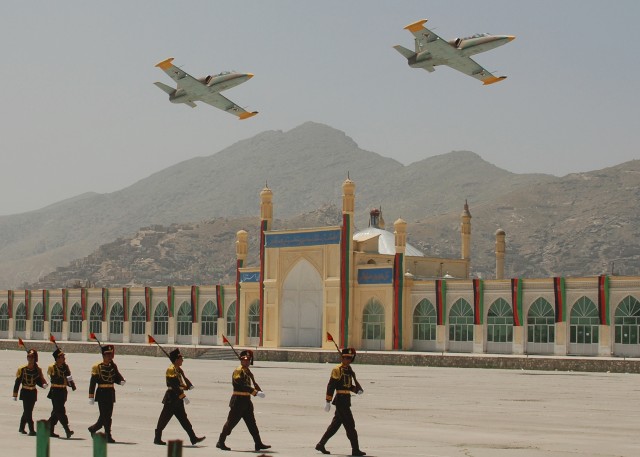KABUL, Afghanistan (Army News Service, June 14, 2007) - When Col. John Hansen began working with the Afghan National Army Air Corps in October 2005, he found only a remnant of the former Afghan air force.
A force that once had 500 aircraft was reduced to only a few flyable craft. And just a small, though dedicated, group of pilots and maintenance people were left to keep the aircraft flying.
"I'll never forget my first trip to the airport," he said. "I was driving around the ruins of the airport, thinking about how daunting the task was."
Starting in a single small office with only three people, the Combined Security Transition Command - Afghanistan's Air Corps mission has grown to now include more than 60 personnel. Forty-four former Afghan Air Force officers have also been hired as contractors to mentor the renewed Air Corps.
The Afghans have spent the last 18 months modernizing their force by upgrading their computer skills, logistics, maintenance and safety practices in order to modernize their force. Slowly, the minimum standards have risen.
"It hasn't always been pretty. Imagine a twenty-five year evolution compressed into two years," Col. Hansen said.
The hard work paid off last month when ANA Air Corps members finally met their goal of flying President Hamid Karzai in an Afghan aircraft with an Afghan crew. He previously flew in coalition aircraft.
Another goal was to be able to support ANA ground combat operations from Kabul. The Air Corps had flown logistics, transport and rescue flights all along, but has only recently contributed combat support to their forces. During Operation Mountain Lion in the spring of '06, two Air Corps helicopters flew in support of Task Force Falcon. Col. Hansen remembers the astonished looks when the ANA troops realized that they'd be flown into combat aboard their own helicopters, and the look of pride on the faces of the Afghan aircrews.
Col. Hansen said he is convinced that Afghan citizens have greater confidence in their government when they see their Air Corps aircraft in flight. "Back in '05 the coalition could only provide the Air Corps with fuel, encouragement and promises," he said.
Old promises of new equipment are now being delivered upon. Last years' $3.5 million budget is expanding to $450 million (projected) to begin purchasing aircraft. By 2011, the Air Corps will have more than 200 aircraft of different types in their inventory, and will have the capability to operate anywhere in the country.
Col. Hansen was so dedicated to the rebirth of the Air Corps that he voluntarily extended in Afghanistan to serve two years. The career helicopter pilot's next assignment will be a staff position in Hawaii.
Maj. Wilmoth summarized Col. Hansen's importance to the renewed Air Corps by saying simply, "No matter where you go in this country, everyone knows him. He is Afghan Air Corps. When he leaves, it will be the end of an era."
(MC1 David Votroubek writes for the Combined Security Transition Command-Afghanistan Public Affairs Office.)


Social Sharing